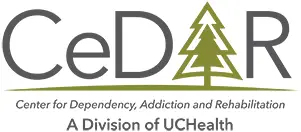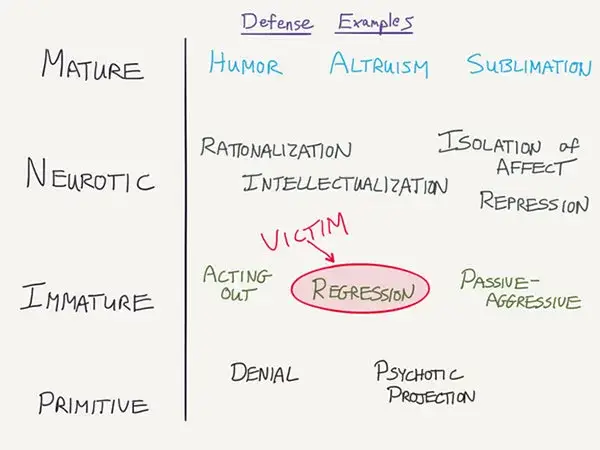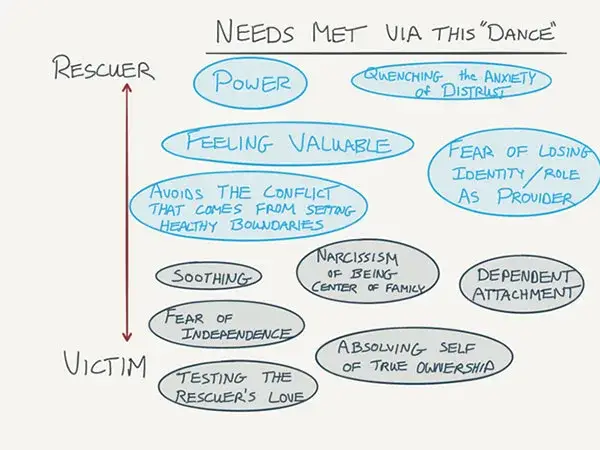FAMILY RECOVERY
You can listen to the audio version of this article:
Drama Triangle: The Victim
The foundational member of the drama triangle is always the victim. Often feeling powerless over an addiction or numerous other areas of life, they become the centerpiece of the family system. Ironically, the victim becomes the most powerful emotional member of the family.
When we say the ‘most powerful member,’ the best analogy is a sort of lightning rod for the emotions of the family. It is common that the day-to-day life of other family members is put on hold in an effort to ‘be supportive’ to the member in need. Because of the nature of the drama triangle, those brief efforts to be supportive often are futile and don’t lead to long-term health for the addicted individual.
Traits of the Victim
Taking the victim position is not an automatic role. There are people who struggle with alcoholism or drugs who are able to assertively seek help, maintain balanced relationships, and effectively heal without such hostage-taking of the family. Those people often have some of the following traits:
- Acceptance of having a disease
- Separation of core self from that disease state
- Recovery capital such as employment or community involvement
- Peer relationships supportive of recovery
To understand what would drive someone to take on a victim role, we need to review some of the core psychological defense mechanisms discussed in therapy. This hierarchy of coping was designed initially by Freud’s daughter, Anna, and was later enhanced by George Vaillant, MD.
Ladder of Defenses
The ladder of defenses implies that all people experience stress and anxiety through life and respond to this anxiety using sometimes more mature coping mechanisms and sometimes less mature. Mature defenses require more awareness of the anxiety and awareness of the coping style. Immature defenses can occur when the person is not well aware of the current anxiety.
It is important to acknowledge that all people, when stressed, have the capability of moving down the ladder to lower levels of psychological coping. Our therapeutic goal with people is to build insight such that the person is functioning as high up on the ladder as they can effectively maintain. This diagram outlines some of the basic defense mechanisms, but there are many more.
Those who continue to fall into victim roles would be categorized as psychologically regressed. Regressed means that the person has moved down the ladder of functioning and is coping in more unconscious and less-healthy ways than someone who would be in more of a mature level of functioning. The person is likely not entirely aware of his or her patterns, and this can contribute to the frustration within the family.
Does your loved one need rehab?
Needs Assessment
Each person in the drama triangle is trying somewhat to get a need met. Because this is drama, as we have discussed, it tends to function with less-than-stellar communication. Nevertheless, the driving force of the needs is strong and will continue amidst such poor verbal communication.
Remember that no role in the drama triangle exists in isolation. The role of the victim requires that of the rescuer to fulfill the unmet needs (or desired needs). This may include the need to be the focus of the family. It may involve the need to be cared for, or the avoidance of the anxiety of being independent.
We use this codependency to our advantage in therapy. The assumption is that we can extinguish the behaviors of the victim by improving the behaviors of the rescuer (or persecutor). If the other side refuses to continue the psychological ‘dance,’ things will have to change.
Healing Goal of the Victim
The primary goal of the victim is to morph into a less ‘needy’ person. Becoming one who is able to acknowledge things like the sick role, vulnerability, and the need for help. The victim is able to surrender some of his or her power and conflict. The begin to use resources, including family members, to collaborate. This collaboration seems to be a core ingredient for healing families. Enabling patterns tend to move the other way, as they encourage lack of engagement for change by the victim role.
Through this path of vulnerability and legitimate seeking of help, often the victim is able to move to a position somewhat outside of the family system. That person is better able to use a therapist or physician relationship to heal rather than being so dependent on the immediate family. This shift takes much of the emotional burden and guilt off of the family and the cycle gains much positive momentum. Families in recovery who have experienced these shifts are often looking stable, motivated, and healthy.


